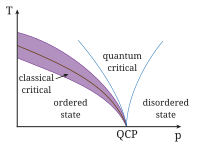Path integrals in polymer science

Imagine that you have a very long chain made up of lots of little beads, kind of like a necklace. This is what we call a polymer. Scientists want to understand how this chain moves and interacts with its environment. To do this, they use something called path integrals.
Think of a path integral like following a path on a map. You start at one point and then follow the path until you get to your destination. In polymer science, we do something similar. We want to know how the polymer chain moves from one point to another. But instead of following a physical path, we use math to figure it out.
We break down the movement of the polymer into tiny, tiny steps. Imagine taking a really small step forward, and then another, and another. Eventually, you'll move a pretty long distance, but you did it in lots of small steps. This is kind of like what we do with path integrals.
We calculate the probability of each little step happening. A step might involve one bead in the polymer chain moving from one spot to another. We figure out how likely that is to happen based on things like the temperature, the size of the bead, and how many other beads are nearby.
Then we add up all of those probabilities to figure out the probability of the polymer chain moving from one point to another. It's a bit like following a treasure map where you need to read many clues to reach the prize. Scientists use these path integrals to understand how the polymer chain moves under different conditions, which helps us create better materials and medicines.
Think of a path integral like following a path on a map. You start at one point and then follow the path until you get to your destination. In polymer science, we do something similar. We want to know how the polymer chain moves from one point to another. But instead of following a physical path, we use math to figure it out.
We break down the movement of the polymer into tiny, tiny steps. Imagine taking a really small step forward, and then another, and another. Eventually, you'll move a pretty long distance, but you did it in lots of small steps. This is kind of like what we do with path integrals.
We calculate the probability of each little step happening. A step might involve one bead in the polymer chain moving from one spot to another. We figure out how likely that is to happen based on things like the temperature, the size of the bead, and how many other beads are nearby.
Then we add up all of those probabilities to figure out the probability of the polymer chain moving from one point to another. It's a bit like following a treasure map where you need to read many clues to reach the prize. Scientists use these path integrals to understand how the polymer chain moves under different conditions, which helps us create better materials and medicines.
Related topics others have asked about:
